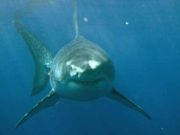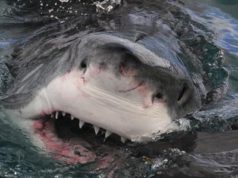We all have to get along with our neighbors. It’s just the way things are, if you want to enjoy a peaceful existence. Although it may be difficult because of cultural, habitual, or recreational activities, there is usually a way that people can find a balance, if both are open to compromise. But how many people can say they are mutually benefiting from their neighbors, or simply interacting in a way that allows both parties to live their lives without much interference from the other
 Sea Cucumber and Imperial Shrimp
Sea Cucumber and Imperial Shrimp
The Imperial shrimp and the sea cucumber can be seen as fast friends of the sea. The Imperial shrimp utilizes the sea cucumber for its locomotive purposes, hanging tight through waters filled with the shrimp’s food source, only disembarking to have a bite, and then climbs aboard to further its travel to the next feeding ground. This is an example of commensalism, wherein one species benefits from the other, while the other neither benefits nor is harmed.
This symbiotic relationship is well-known, due to the popularity of films such as Finding Nemo. The sea anemone and clown fish are a great example of mutualism, meaning both species benefit from having the other around. The anemone protects the clown fish by concealing it within its poisonous arms, as well as leaving scraps of its meals for the clown fish to consume. In return, the clown fish rids the anemone of parasites, wards away predators, and even offers nutrients by way of its excrement.
The relationship between whale and barnacle is yet another example of commensalism. The whale reaps no rewards from a barnacle attaching to its body, yet poses no threat to the whale. The barnacle reaps great rewards by attaching itself to a whale because of its filter-feeding nature. Like the Imperial shrimp, it stands to gain an abundant food source by attaching itself to a whale for the duration of its existence.
A most striking balance is struck between the decorator crab and the sponges it, well, decorates itself with. The decorator crab does so as a means of defense, snipping bits of sponges to cover its shell as camouflage. The sponges continue about their lives, filter feeding as they normally would attached to coral or any other surface. The crab can also benefit by toxins that may be inherent to the species of sponge it chooses, as well as feeding on the algae growing around the sponge. The sponge benefits much in the way of the previous “hitchhikers”, by being exposed to many feeding opportunities based on the crab’s movements.
Remoras are known collectively as “sucker fish” for their propensity to attach themselves to many different types of species, including dugongs, sharks, sea turtles, and manta rays. The remora uses its host for the usual amenities: protection, transportation, and scraps from the larger predator’s meals. The remora can also exist in mutualism with its host by cleaning its skin of bacteria and parasites.














